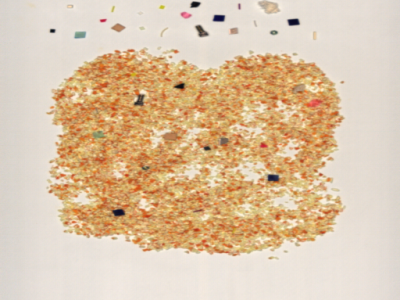Hyperspectral Imaging
Hyperspectral imaging captures material-specific spectral data, making it highly effective for detecting contaminants in food that are challenging to identify using conventional methods. In the food industry, the occurrence of unknown contaminants is particularly problematic due to the difficulty in obtaining training data. This highlights the need for anomaly detection algorithms that can identify previously unseen contaminants by learning from normal data. This dataset is designed to test anomaly detection performance in normal data that contains impurities.
- Categories:
 65 Views
65 ViewsThe "CloudPatch-7 Hyperspectral Dataset" comprises a manually curated collection of hyperspectral images, focused on pixel classification of atmospheric cloud classes. This labeled dataset features 380 patches, each a 50x50 pixel grid, derived from 28 larger, unlabeled parent images approximately 4402-by-1600 pixels in size. Captured using the Resonon PIKA XC2 camera, these images span 462 spectral bands from 400 to 1000 nm.
- Categories:
 566 Views
566 Views
The Objects Mosaic Hyperspectral Database contains 10,666 hyperspectral cubes of size 256x256x29 in the 420-700nm spectral range. This original hyperspectral database of real objects was experimentally acquired as described in the paper "SHS-GAN: Synthetic enhancement of a natural hyperspectral database", by J. Hauser, G. Shtendel, A. Zeligman, A. Averbuch, and M. Nathan, in the IEEE Transactions on Computational Imaging.
In addition, the database contains the SHS-GAN algorithm, which enables to generate synthetic database of hyperspectral images.
- Categories:
 524 Views
524 Views
